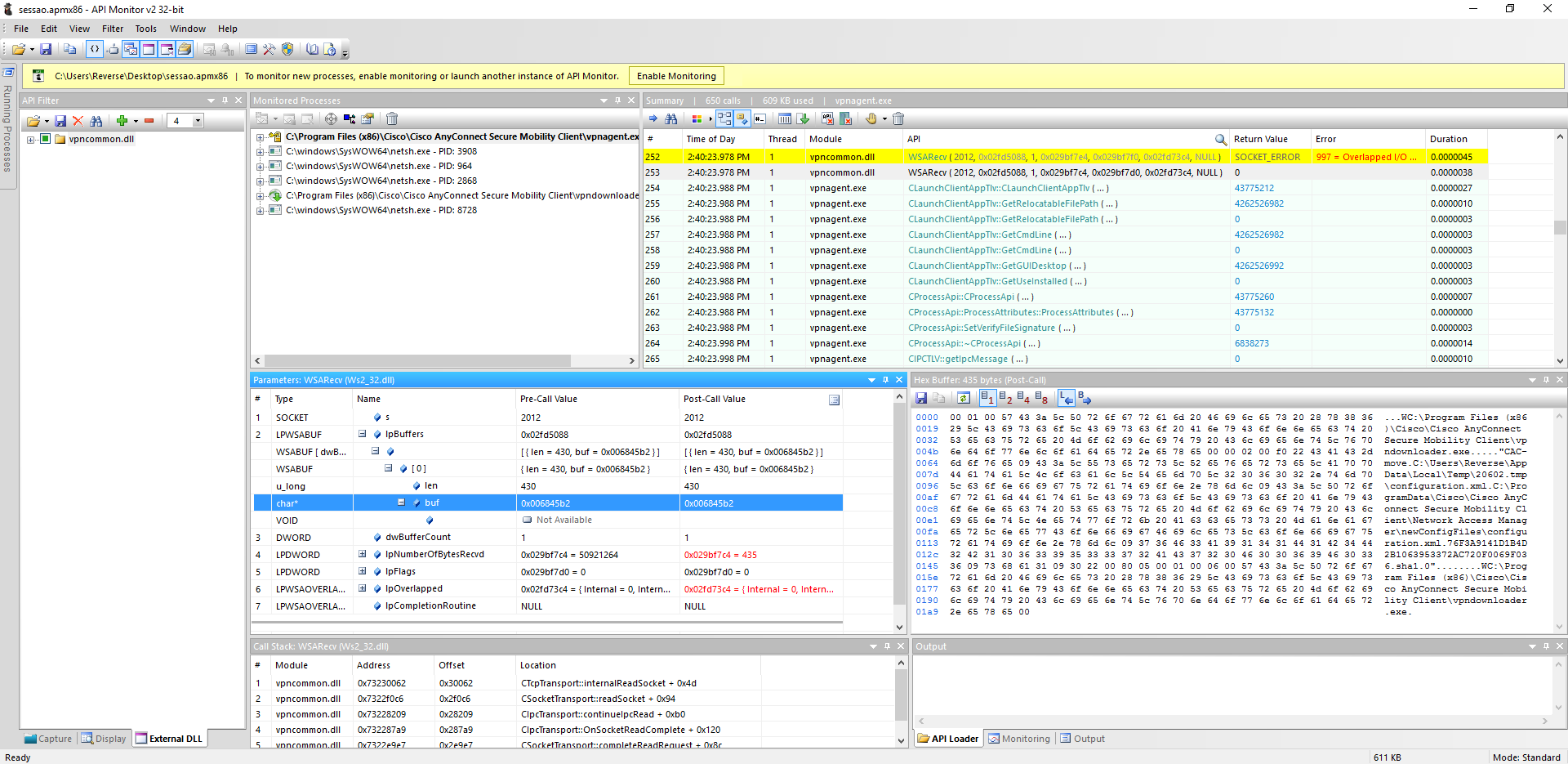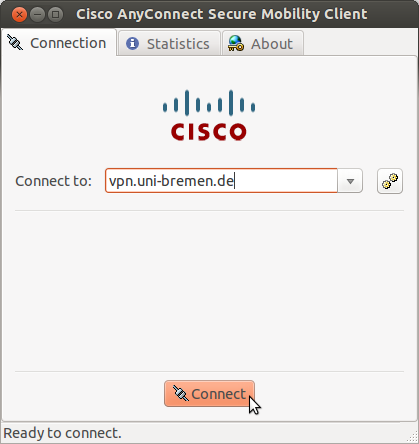VPNUI.EXE process information
Description:Vpnui.exe is set to be start when the PC boots and any user logs into Windows (added to the Run registry key for the all users under the local machine). It is installed with a couple of know programs including Cisco AnyConnect Secure Mobility Client published by Cisco Systems, Inc., Cisco AnyConnect Secure Mobility Client from Cisco Systems. Vpnui.exe - Cisco AnyConnect Secure Mobility Client by Cisco Systems - Boost Your PC. Cisco AnyConnect Secure Mobility Client empowers remote workers with frictionless, highly secure access to the enterprise network from any device, at any time, in.
vpnui.exe file from Cisco Systems, Inc is part of vpnui. vpnui.exe located in Unknown file path with file size 0.00 byte, file version Unknown version, MD5 signature not found.Check processes running in your PC using online security database. You could use any type of scanning to check your PC against Viruses, Trojans, Spywares and other malicious programs
Recommended: * To help you analyze the vpnui.exe process on your computer, 'Asmwsoft PC optimizer' program have proven to be helpful.
- Right-click vpnui.exe in the Cisco AnyConnect Secure Mobility Client folder. (Look for this file in C: Program Files (x86) Cisco Cisco AnyConnect Secure Mobility Client ). Click on the Run compatibility troubleshooter button. Select Try recommended settings. (The wizard suggests Windows 8 compatibility.).
- UI Anywhere is a Virtual Private Network (VPN) that provides secure, off-campus access to resources located on the University of Iowa campus. Examples of resources located on the UI campus.
Vpnui.exe Download
Comments:Other Process:
WORDVIEW.EXECCS.exedopus.exeStreetsOlkShim.exesmss .exe vpnui.exe Alt Q Hotkey.exeE_FATIEFL.EXECoolGram.exedownloader.exeepmworker.exe [All processes]Virtual private networks (VPNs) give users secure remote access to your organization network. Devices use a VPN connection profile to start a connection with the VPN server. VPN profiles in Microsoft Intune assign VPN settings to users and devices in your organization. Use these settings so users can easily and securely connect to your organizational network.
This feature applies to:
- Android device administrator
- Android Enterprise personally-owned devices with a work profile
- iOS/iPadOS
- macOS
- Windows 10 and newer
- Windows 8.1 and newer
For example, you want to configure all iOS/iPadOS devices with the required settings to connect to a file share on the organization network. You create a VPN profile that includes these settings. You assign this profile to all users who have iOS/iPadOS devices. The users see the VPN connection in the list of available networks, and can connect with minimal effort.
This article lists the VPN apps you can use, shows you how to create a VPN profile, and includes guidance on securing your VPN profiles. You must deploy the VPN app before you create the VPN profile. If you need help deploying apps using Microsoft Intune, see What is app management in Microsoft Intune?.
Note
User enrollment for iOS/iPadOS and macOS only supports per-app VPN.
You can use Intune custom configuration policies to create VPN profiles for the following platforms:
- Android 4 and later
- Enrolled devices that run Windows 8.1 and later
- Enrolled devices that run Windows 10 desktop
- Windows Holographic for Business
VPN connection types
Important
Before you can use VPN profiles assigned to a device, you must install the VPN app for the profile. To help you assign the app using Intune, see Add apps to Microsoft Intune.
You can create VPN profiles using the following connection types:

Automatic
- Windows 10
Check Point Capsule VPN
- Android device administrator
- Android Enterprise personally owned devices with a work profile
- Android Enterprise fully managed and corporate-owned work profile: Use app configuration policy
- iOS/iPadOS
- macOS
- Windows 10
- Windows 8.1
Cisco AnyConnect
- Android device administrator
- Android Enterprise personally owned devices with a work profile
- Android Enterprise fully managed and corporate-owned work profile
- iOS/iPadOS
- macOS
- Windows 10
Cisco (IPSec)
- iOS/iPadOS
Citrix SSO
- Android device administrator
- Android Enterprise personally owned devices with a work profile: Use app configuration policy
- Android Enterprise fully managed and corporate-owned work profiles: Use app configuration policy
- iOS/iPadOS
- Windows 10
Custom VPN
- iOS/iPadOS
- macOS
Create custom VPN profiles using URI settings in Create a profile with custom settings.
F5 Access
- Android device administrator
- Android Enterprise personally owned devices with a work profile
- Android Enterprise fully managed and corporate-owned work profile
- iOS/iPadOS
- macOS
- Windows 10
- Windows 8.1
IKEv2
- iOS/iPadOS
- Windows 10
L2TP
- Windows 10
Microsoft Tunnel (standalone client)
- Android Enterprise personally owned devices with a work profile
- Android Enterprise fully managed and corporate-owned work profile
- iOS/iPadOS
Important
In preparation for the public preview of Tunnel client functionality in the Microsoft Defender for Endpoint app, the VPN profile connection type for the Microsoft Tunnel client app has been renamed to Microsoft Tunnel (standalone client). At this time, you should use the Microsoft Tunnel (standalone client) connection type, not the Microsoft Tunnel connection type.
NetMotion Mobility
- Android Enterprise personally owned devices with a work profile
- Android Enterprise fully managed and corporate-owned work profile
- iOS/iPadOS
- macOS
Palo Alto Networks GlobalProtect
- Android Enterprise personally owned devices with a work profile: Use app configuration policy
- Android Enterprise fully managed and corporate-owned work profile: Use app configuration policy
- iOS/iPadOS
- Windows 10
PPTP
- Windows 10
Pulse Secure
- Android device administrator
- Android Enterprise personally owned devices with a work profile
- Android Enterprise fully managed and corporate-owned work profile
- iOS/iPadOS
- Windows 10
- Windows 8.1
SonicWall Mobile Connect
- Android device administrator
- Android Enterprise personally owned devices with a work profile
- Android Enterprise fully managed and corporate-owned work profile
- iOS/iPadOS
- macOS
- Windows 10
- Windows 8.1
Zscaler
- Android Enterprise personally owned devices with a work profile: Use app configuration policy
- Android Enterprise fully managed and corporate-owned work profile: Use app configuration policy
- iOS/iPadOS
Create the profile
Sign in to the Microsoft Endpoint Manager admin center.
Select Devices > Configuration profiles > Create profile.
Enter the following properties:
- Platform: Choose the platform of your devices. Your options:
- Android device administrator
- Android Enterprise > Fully Managed, Dedicated, and Corporate-Owned Work Profile
- Android Enterprise > Personally-owned work profile
- iOS/iPadOS
- macOS
- Windows 10 and later
- Windows 8.1 and later
- Profile: Select VPN. Or, select Templates > VPN.
- Platform: Choose the platform of your devices. Your options:
Select Create.
In Basics, enter the following properties:
- Name: Enter a descriptive name for the profile. Name your profiles so you can easily identify them later. For example, a good profile name is VPN profile for entire company.
- Description: Enter a description for the profile. This setting is optional, but recommended.
Select Next.
In Configuration settings, depending on the platform you chose, the settings you can configure are different. Select your platform for detailed settings:
- Windows 10 (including Windows Holographic for Business)
Select Next.
In Scope tags (optional), assign a tag to filter the profile to specific IT groups, such as
US-NC IT TeamorJohnGlenn_ITDepartment. For more information about scope tags, see Use RBAC and scope tags for distributed IT.Select Next.
In Assignments, select the user or groups that will receive your profile. For more information on assigning profiles, see Assign user and device profiles.
Select Next.
In Review + create, review your settings. When you select Create, your changes are saved, and the profile is assigned. The policy is also shown in the profiles list.
Secure your VPN profiles
VPN profiles can use many different connection types and protocols from different manufacturers. These connections are typically secured through the following methods.
Certificates
When you create the VPN profile, you choose a SCEP or PKCS certificate profile that you previously created in Intune. This profile is known as the identity certificate. It's used to authenticate against a trusted certificate profile (or root certificate) that you create to allow the user's device to connect. The trusted certificate is assigned to the computer that authenticates the VPN connection, typically, the VPN server.

If you use certificate-based authentication for your VPN profile, then deploy the VPN profile, certificate profile, and trusted root profile to the same groups. This assignment makes sure each device recognizes the legitimacy of your certificate authority.


For more information about how to create and use certificate profiles in Intune, see How to configure certificates with Microsoft Intune.
Note
Certificates added using the PKCS imported certificate profile aren't supported for VPN authentication. Certificates added using the PKCS certificates profile are supported for VPN authentication.
User name and password
The user authenticates to the VPN server by providing a user name and password, or derived credentials.
Vpnui.exe Parameters
Next steps
Vpnui Exe Vpnui
- Assign the profile and monitor its status.
- You can also create and use per-app VPNs on Android device administrator/Android Enterprise and iOS/iPadOS devices.
